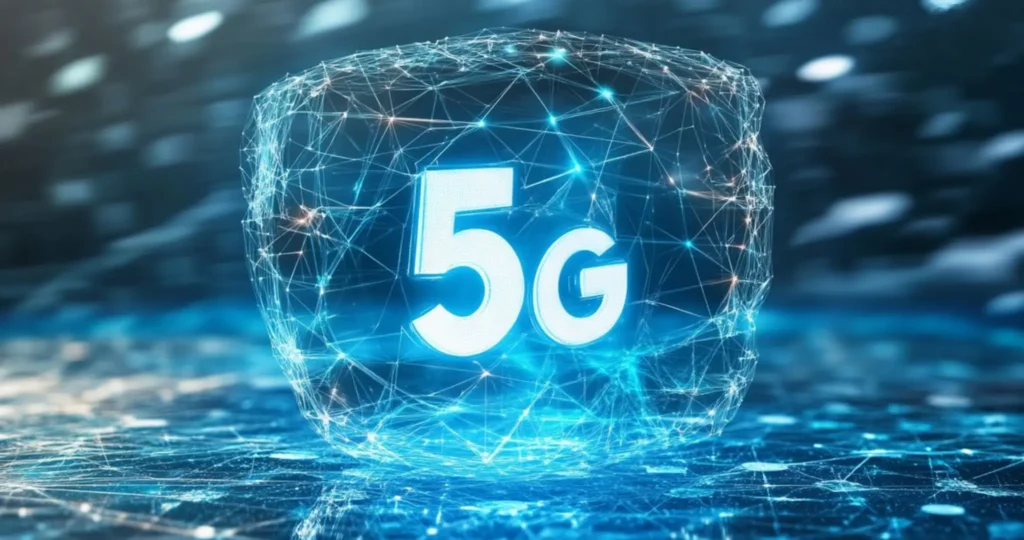Table of Contents
Introduction
NVIDIA and SoftBank are set to transform the world of telecommunications with their plans to launch an AI-driven 5G network. This pioneering partnership aims to enhance connectivity, automate network operations, and enable advanced applications across various industries. Leveraging NVIDIA’s AI prowess alongside SoftBank’s extensive network capabilities, this initiative promises to redefine the future of 5G, offering faster speeds, lower latency, and more efficient operations.

1. NVIDIA and SoftBank’s Vision
NVIDIA, known for its innovative contributions to AI and computing, has been at the forefront of developing high-performance hardware and software solutions. SoftBank, a global leader in telecommunications, has always been focused on advancing network infrastructure and adopting new technologies. Together, they aim to develop a network that not only leverages the high-speed, low-latency capabilities of 5G but also uses AI to streamline and optimize operations.
2. The Role of AI in 5G Networks
AI is increasingly being integrated into network infrastructure for its ability to manage complex systems in real-time. In a 5G network, AI plays a critical role in:
- Automating network management: AI can predict and troubleshoot network issues automatically, reducing downtime and improving service reliability.
- Optimizing data traffic: AI algorithms can direct data traffic more efficiently, preventing network congestion and ensuring users receive consistent performance.
- Enhancing security: AI-driven security systems can detect and respond to potential threats faster than traditional methods, making 5G networks safer.
- Enabling edge computing: AI at the network’s edge enables faster processing for real-time applications, including autonomous vehicles, smart cities, and IoT devices.
3. Key Technologies Behind the AI-Driven 5G Network
The AI-powered 5G network by NVIDIA and SoftBank is built on cutting-edge technologies:
- NVIDIA’s GPU and AI Software: NVIDIA’s powerful GPUs are well-suited for processing the large data volumes typical of 5G networks. Combined with NVIDIA’s AI frameworks, these GPUs will power AI-driven functionalities like predictive maintenance and traffic optimization.
- Distributed Edge Computing: The partnership is expected to leverage NVIDIA’s edge computing solutions, allowing data to be processed closer to users. This reduces latency and supports real-time applications, essential for technologies like augmented reality and autonomous driving.
- Open RAN (Radio Access Network): By utilizing an open, virtualized RAN structure, the network can be more flexible, allowing third-party developers to integrate new applications and services seamlessly.

4. Benefits of an AI-Driven 5G Network
An AI-enhanced 5G network promises to offer several key benefits, including:
- Increased Efficiency: AI automation allows the network to self-optimize, resulting in lower operational costs and higher energy efficiency.
- Enhanced User Experience: Users will enjoy faster speeds, fewer interruptions, and more reliable connections, making applications like high-definition streaming and VR more feasible.
- Reduced Latency for Mission-Critical Applications: AI-driven 5G can meet the low-latency requirements for applications like remote surgery, autonomous vehicles, and smart city operations.
- Scalability for Future Technologies: As new devices and applications emerge, an AI-driven network will be better equipped to scale and adapt to new demands.
5. Potential Impact Across Industries
An AI-powered 5G network has the potential to bring transformative changes to multiple sectors:
- Healthcare: Real-time data transfer enables remote surgeries, telemedicine, and continuous patient monitoring, improving healthcare access and quality.
- Automotive: Autonomous vehicles can benefit from low-latency communication, enabling safer and more reliable vehicle-to-vehicle and vehicle-to-infrastructure interactions.
- Manufacturing: Smart factories can optimize production lines using real-time data, and remote monitoring can ensure high productivity with fewer manual interventions.
- Retail: Retailers can enhance customer experience with technologies like augmented reality (AR) for virtual shopping, while also optimizing supply chain and inventory management.
- Entertainment: High-speed streaming, VR, and cloud gaming will become smoother and more accessible to consumers, supporting new entertainment formats.
6. Challenges and Considerations
While the AI-driven 5G network promises revolutionary benefits, some challenges remain:
- Privacy and Security Concerns: Integrating AI into network infrastructure can create potential vulnerabilities, requiring robust security measures to protect user data.
- Infrastructure Costs: Deploying an AI-enhanced 5G network requires significant investment in both hardware and software, which could limit initial adoption in less developed regions.
- Regulatory Hurdles: Different countries have varying regulations for 5G and AI, meaning global implementation may face legal and compliance challenges.

7. The Future of AI-Driven 5G Networks
The collaboration between NVIDIA and SoftBank marks the beginning of an era where AI and 5G merge to offer unprecedented network capabilities. This initiative could lead to a new standard in telecommunications, one that is more efficient, flexible, and capable of supporting the data-intensive applications of tomorrow. With continued investment in AI, edge computing, and open RAN architecture, the potential for an AI-powered 5G network to reshape industries and enhance digital experiences worldwide is boundless.
Conclusion
NVIDIA and SoftBank’s AI-driven 5G network has the potential to revolutionize telecommunications, bringing faster, more reliable, and more intelligent connectivity to the world. As this technology evolves, it promises to impact various sectors, enabling innovative applications and improving user experiences across the board. This partnership underscores the future possibilities of combining AI with 5G, and as these networks roll out, the way we connect and interact with technology will change forever.